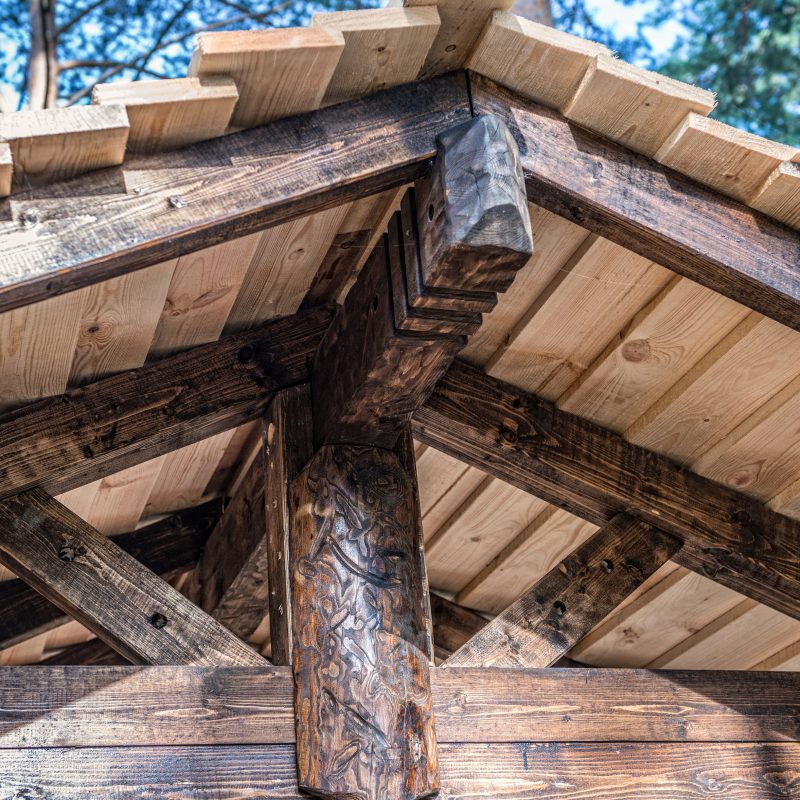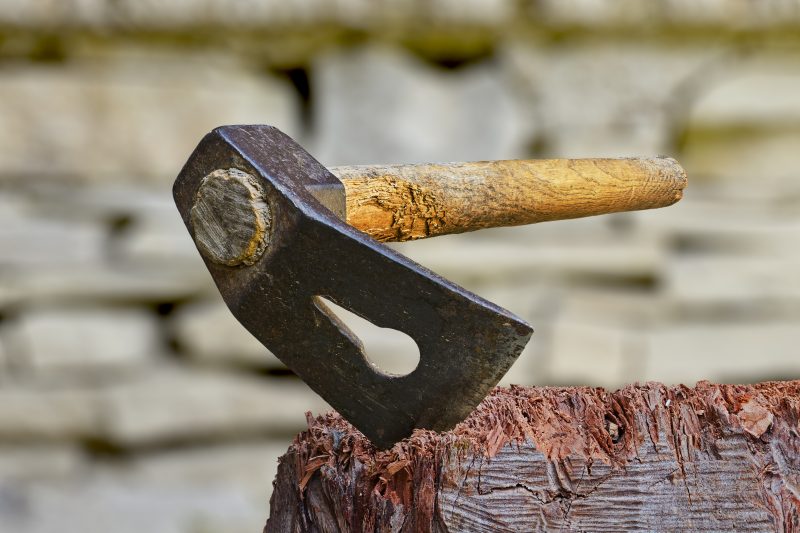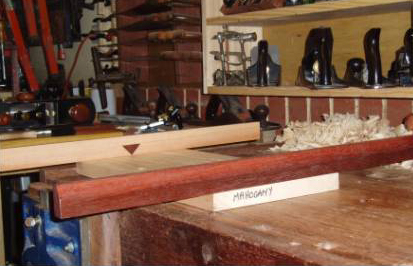Survival Shelter – Squaring Beams by Hand a Great Skill to Learn
When we think of a log cabin, the image that usually comes to mind is that of a rustic cabin made of round logs, maybe even with the bark still on them (although the bark was almost always removed). While there have been plenty of these round log cabins built throughout the years, there are many advantages to building with squared logs.
The problem with using round logs, especially round pine logs, is that they are not perfectly even. Lodgepole pines, which are the preferred trees for making log homes out of if they are available, are probably the closest to being even – but even those are tapered. This means that the logs have to be laid with the thick end at alternate ends of the wall in order to keep the wall’s height even.
But there’s another serious problem with round logs: that of the spaces left between them by inconsistencies in the log’s diameter, protrusions from branches, and even the curving of the tree as it grows. While some of this can be eliminated by judicious tree choice, these problems are always going to exist.

For this reason, round log homes always have to be chinked. At times, you’ll see a log home with what looks like layers of concrete between the logs.
That’s the chinking. In olden times, chinking was often accomplished with nothing more than mud or clay if it was available. Of course, this wasn’t waterproof so it had to be redone from time to time as the weather wore away at it.
Redoing the chinking was an important part of preparing for winter, and it was often done just after harvest-time and before the winter weather set in for good. But some people didn’t have to bother as much with that because their home was built in such a way as to not need chinking – or at least not as much.
The secret to this was to make the mating surfaces of the logs flat: squaring them so that they met up evenly without leaving all those gaps. While a small amount of chinking would still be needed, it would be much less.
Since the chinking would be captured between the flat surfaces cut into the logs, there would be less chance of it being eroded away by the weather, meaning that even the chinking would last longer. This helped to keep the home warm.
Squaring a Log
Before beginning to square a log, it has to be set someplace where it is easy to work on. This is usually on squared log sections that are leftover from another project or which have been made specifically for use in squaring operations. Either V-blocks or straight blocks can be used.
In the case of straight blocks, the log will be held in place with “dogs,” which are a squared metal “C” with sharpened points on the legs (back roughly 2 feet long and legs roughly 4 inches). The sharpened points allow it to be driven into the log and support.
The first part of squaring any log, once it is cut and the limbs have been cut off, is to strip the bark. This is done with a drawknife, peeling off both the outer and inner bark and just leaving the heartwood. Any knots from removed branches can be smoothed at the same time.

With the log ready to work on, the next step is to draw out what you want to do – either squaring just the top and bottom or fully squaring the log. This is drawn out on both ends using a level to ensure that you have them even (without any twist). A chalk line is then used to connect the ends, providing a guideline down the length of the log.
The next step is to crosscut the part you want to remove in several locations about a foot apart – essentially breaking that part of the log up into sections. This cut shouldn’t be all the way down to the line but should come close. That way, there’s no risk of cutting too far. Making these cuts will allow you to work on each section individually – clearing the chips off so that they are not in your way. This can be done either by using a crosscut saw or bucking saw or by using a broadhead ax and notching the log.
At this point, there are several things you can do depending on the tools you have available to you:
- Drive wedges into the end of the log, splitting off the scrap portion
- Use a sharp (as sharp as a chisel) broadhead ax to cut off the scrap portion
- Use a froe, driven into the end, to split the log. This may have to be used in conjunction with wedges to move the split farther up the log
- Use an adze
Broadhead Ax
Of these three methods, using a froe is the hardest and requires the most skill. The broadhead ax is the fastest and will provide the best results, but it takes a little practice to get the hang of. It’s actually rather easy to cut the log this way because you are going with the grain rather than across the grain. But you have to have a very sharp ax in order to make the work easy.
You can tell that a broadhead ax is sharp enough when it can be used two-handed, like a chisel, to shave off high points in the wood. This allows the same tool to be used for rough work and the finer finishing work.

The other thing your ax has to have is a strong handle. You will not only be swinging the ax to cut into the log, but you will also be prying the parts you’ve cut off by twisting the ax. I can tell you from experience that if your ax handle isn’t strong enough, you’re going to be replacing it frequently as it will break when you apply leverage under that twisting motion.
A broadhead ax is used with the log sitting close to the ground and with the worker standing beside it, working the opposite side of the log. In this manner, the log acts as a protective guard so that the worker doesn’t cut their leg.
Splitting the Log

Splitting the log only works with trees that don’t have any twist in them, as the split will follow the grain of the wood. While it isn’t always possible to tell before the tree is felled, you should be able to tell if there is any twist once the bark has been removed with the drawknife. If there is any twist whatsoever, the log should not be split but instead squared with a broadax or an adze.
When logs are split by any means, they will need to be cleaned up by working them over with a chisel, broadhead ax, or adze to smooth them out further and remove any high points in the wood.
The Adze

The adze has no modern equivalent, except possibly the hoe. But a hoe is used for gardening not for cutting wood, and the handle is much shorter. Like the hoe, the adze works with a chopping motion, but the swing is intended to follow-through past the point of the cut and scoop off chips of wood.
The adze is not normally used for the first part of squaring a log, but rather to do the finer work. It is used by straddling the log, which has to be close to the ground. A swinging motion between the legs is most common, although some stronger workers stand to one side and swing with one hand. You can easily tell the work of a skilled worker with the adze as the chips will be nearly the same size.
Like the braodhead ax, it is important to have the adze sharp when using it. After a rough cut is made to square the log and bring it close to final dimensions, a second pass is made with the adze held at an angle to the grain so that high points can be shaved off to smooth the log.
Winding Sticks

One final tool is worth mentioning in this process: winding sticks. Normally only used by cabinetmakers in the era before power tools, winding sticks are two pieces of contrastingly colored wood that are perfectly straight and of exactly the same dimensions. This allows them to be used to visually determine if there is any twist in a board or, in this case, a squared beam.
To use the winding sticks, they are placed crosswise on the board or beam to be checked. You then go to one end and sight across the top of the near winding stick, raising or lowering your sight line until the other stick is just barely visible above it. If there is any twist in the beam, it will be glaringly obvious because the line made by the far stick above the near stick will be uneven.





